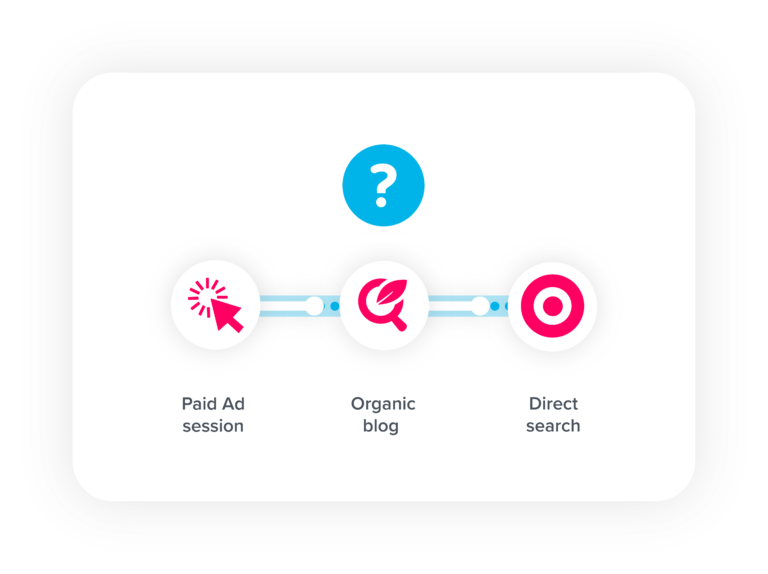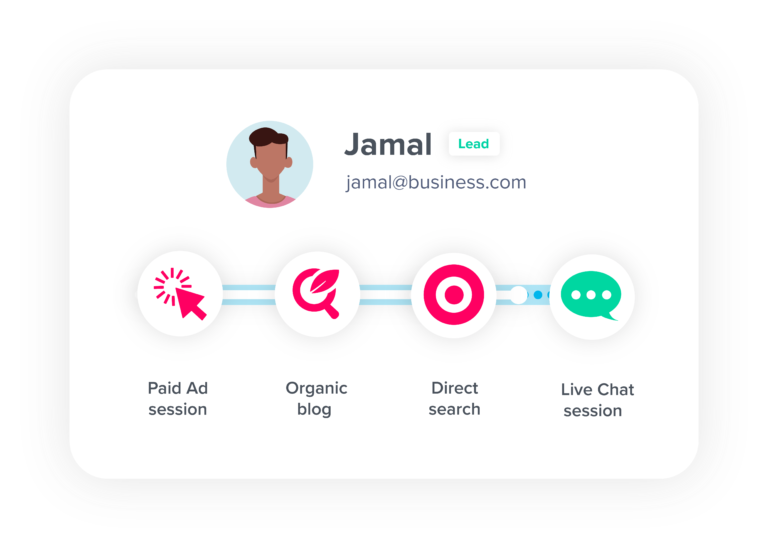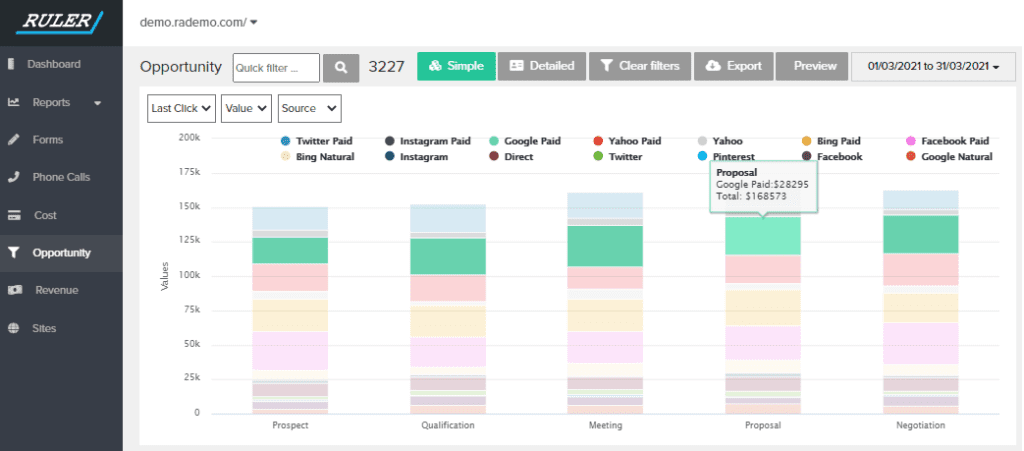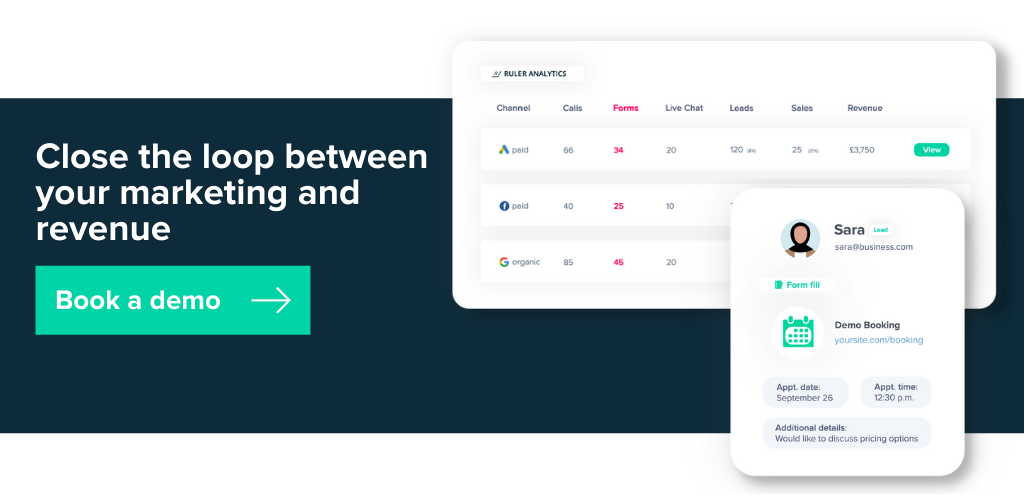Link your marketing leads and revenue with sales attribution and gain key insights to optimise your campaigns for better results.
Marketers are being held increasingly accountable for the need to connect efforts with more than simple lead generation.
The ability to attribute revenue to marketing leads is no longer a nice to have option.
While most marketers understand the importance of connecting the dots between marketing and revenue, it is very rarely carried out successfully.
Mainly because they don’t know how to do it or find the process too complicated.
With sales attribution, however, marketers can effortlessly reveal which lead generation techniques are most profitable and drive the highest value customers.
In this post, we’ll discuss:
💡 Pro Tip
Closed-loop marketing attribution takes out the leg work by automatically connecting your marketing source and revenue data. Download the eBook and determine which specific marketing channels are most effective in driving revenue for your business.
Download closed loop marketing attribution eBook
Sales attribution is the process of “closing the loop” between your marketing and sales.
It’s essentially the link that ties your conversions and revenue to the marketing channels involved in closing a deal or sale.
For example, let’s say you’re on the marketing team for a popular car dealership.
A user types the name of a specific car model into Google, clicks on an ad and converts into a lead by requesting a test drive.
The lead turns up at the dealership for their test drive and after some negotiation, purchases the car. In such circumstances, you’d attribute 100% of the sale to Google Ads for the interaction.
Without sales attribution, this customer journey, along with others, would be untrackable.
Marketers need sales attribution to help them identify which marketing channels are most effective in driving high-quality leads and revenue.
According to a study, 77% of digital marketers feel under pressure to meet acquisition and revenue goals more than they did a year ago.
In reality, company leaders (or clients) don’t want to hear about how many leads you’ve generated. They want answers to questions such as:
With sales attribution, you get those answers, which you can forward to your company leaders and clients with complete confidence.
Sales attribution helps connect all your sales and marketing touchpoints and provides a complete view of your campaign performance. However, marketers are having a tough time executing the process due to the following reasons.
Marketers are in no way short on data.
In fact, they’re drowning in it.
But, in a survey, we found that 20% of marketers struggle to account for all of their marketing data.
So, what’s the issue?
The data they need to connect sales with marketing leads is stored and locked away in different tools and processes.
Too often, sales and marketing will remain laser-focused on their own objectives and will fail to collaborate on the same data.
The marketing team will concentrate on generating traffic and driving as many leads as possible. When leads are converted, they’re thrown over the wall and nurtured, engaged, and qualified by the sales teams.
While this process may sound straightforward, it often becomes complicated.
When leads are handed over to sales, marketing loses visibility. And, they have no way of determining which lead generation tactics are most effective in driving revenue.
The best sales can offer marketing is feedback on the quality of leads, and depending on whether they’ve had a good or bad month, it’ll likely be either “these leads are rubbish” or “these leads are great, keep them coming”.
There’s no denying it.
The path to purchase has grown increasingly complex over the last few years, and most customers are split over multiple channels, campaigns and sessions.
In fact, according to research, 15 years ago, the average consumer typically used two touchpoints when buying an item, and only 7% regularly used more than four.
Today consumers use an average of almost six touchpoints, with nearly 50% regularly using more than four.
And as new channels continue to emerge and budgets grow, the process of tracking and attributing sales across multiple channels, campaigns, sessions and more will only get more complicated.
💡 Pro Tip
Tracking customer interactions across multiple channels unlocks powerful insight which you can use to improve your customer experience and marketing efforts. Download our guide below and learn how to follow the complete lifecycle from awareness to loyalty.
Learn how to track your full customer journeys
Sales attribution is a must-have solution, but as we’ve already discussed, many marketers find the process cumbersome and stressful.
With Ruler Analytics, the process of connecting leads and sales couldn’t be any easier.
Ruler is a closed-loop marketing attribution tool that aligns revenue from your CRM with your marketing leads, allowing you to effectively demonstrate your impact on revenue generation.
Let’s take a closer look at how it works.
Ruler tracks every anonymous visitor over multiple sessions, traffic sources, keywords and more.
Related post: How to view full customer journeys with Ruler
It uses first-party cookies to track your visitors, so every time a user revisits, Ruler’s code fires and is able to match the cookie data to repeat visitors.

When an anonymous visitor converts into a lead, Ruler matches the user’s details to their unique touchpoints. This includes the source campaign, channel, keyword used on a first or last click basis.

A lead could convert over the phone, form or live chat, but Ruler can easily track these mediums using its call tracking and lead capturing features.
The lead information passed from Ruler to your CRM for the sales team to process. Each deal in the CRM is enriched with lead source data, allowing you to create a better alignment with sales and marketing.
It’s worth mentioning that you can also send pipeline data and closed/won revenue from your CRM back to the opportunity report in Ruler.
Related: Sales opportunity attribution reporting with Ruler

With opportunity attribution, you can see how many leads are in each stage of your pipeline. And, make smarter decisions about where to spend your time and marketing budget.
When a lead converts into a deal or sale, we send the customer’s information, such as the revenue amount and marketing data, back to the Ruler database.
Related: How Ruler attributes revenue to your marketing
This data is then attributed across the customer’s touchpoints, allowing you to see which marketing channels are having the greatest impact on downstream activity.
✏️ Product Note
Learn more on why you need Ruler Analytics and see how it can help you get more out of your marketing data. Or, alternatively, book a demo to see first-hand how Ruler can attribute marketing-generated revenue back to your leads.
Wait, there’s more.
When an opportunity is marked as closed or won in your CRM, Ruler can automatically send the value of the lead or sale to your favourite sales and marketing tools.
Editor’s note: Ruler integrates with 1000+ tools. See a list of the most popular integrations here.
Ruler is a Google partner. It lets you report and view revenue data throughout the Google Analytics reporting suite for web forms, phone calls and live chat enquiries, allowing you to see which marketing sources not only drive the most conversions but revenue too.
Related: How Ruler Enriches Your Attribution Reports in Google Analytics
In this example, you can see how much revenue each channel is working to generate through set goals created with Ruler.

Both Facebook and Instagram have generated the same amount of leads.
But, when you look closer, you can see that Facebook has contributed significantly more revenue. Just one benefit of many available with Ruler.
As a marketer, you should always be proving why your work matters to your company, and sales attribution is the perfect way to do that.
And, with Ruler you can see which channels are driving actions on an individual basis, allowing you to effortlessly link sales with your marketing leads with complete confidence.
Want more info? Book a demo and see how the Ruler can improve the quality of your reporting with sales attribution.
